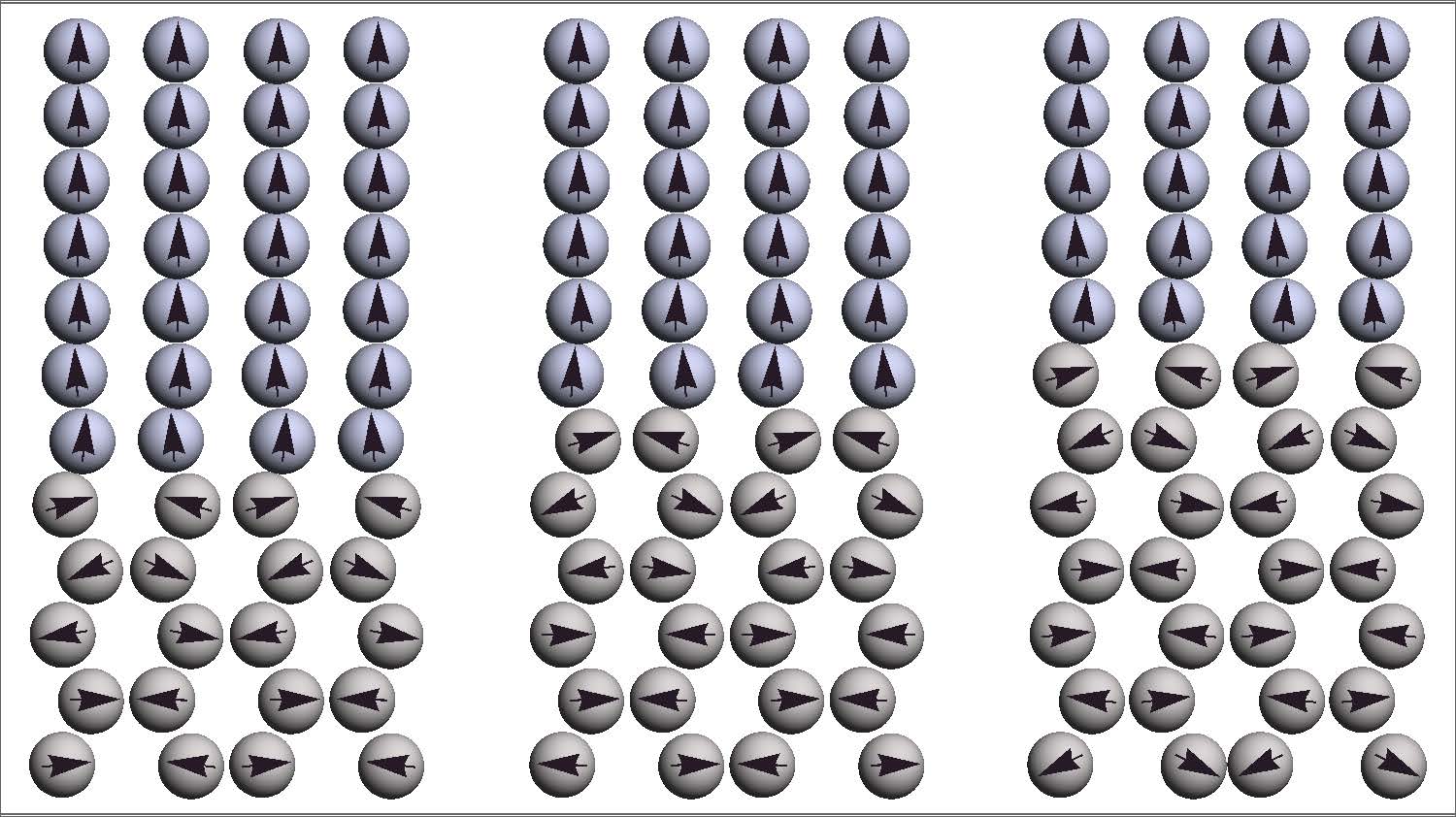Reversible compression of iron
Dr. Neil Canter, Contributing Editor | TLT Tech Beat January 2017
Theoretical calculations provide insight on the transformation of iron from the alpha to the epsilon phase.
KEY CONCEPTS
•
Under severe compression, iron can transform from the alpha phase to the epsilon phase and, upon release, revert to the alpha phase.
•
Theoretical calculations reveal an energy barrier that must be overcome to enable the structural transition to occur.
•
The key to the conversion is the movement of some iron atoms over the energy barrier, facilitating the transformation to the epsilon phase.
IRON AND ITS ALLOYS ARE THE MOST WIDELY USED METAL in machinery that require lubrication to operate, whether it is the ferrous alloys used in automobiles or the ferrous alloys that are machined in a variety of metalworking operations. As researchers learn about the properties of iron and its alloys, this enables better lubricants to be developed to optimize performance. Yet even today, iron has its surprises.
In a previous TLT article, application of torsion to twinning-induced plasticity steels leads to a strengthening of the steels without sacrificing ductility (
1). This process overcomes the inverse relationship that exists between the strength and ductility of steel, which hinders development of high-performing alloys. In applying the torsion, a gradient structure is produced that has a hardened surface but retains a ductile core.
One recent mystery is how, under the right conditions, iron can transform structure but still remember and revert to its original shape. Dr. Michael Surh, material scientist in the Computational Materials Science Group at the Lawrence Livermore National Laboratory in Livermore, Calif., says, “Under compression, alpha iron in the body-centered cubic structure undergoes a well-known phase transition to epsilon iron, a hexagonal close-packed structure. On release, iron transforms back to alpha phase. Usually, the process leaves the recovered material plastically deformed, highly defected and a disordered polycrystalline, but under very precise conditions a single crystal of high purity iron can be compressed, transformed, released and recovered, having largely reverted to its original, single crystal form.”
The unexpected behavior of iron is similar to what is seen with shape-memory alloys, metals that also can change their linear dimensions by nearly 10% and then revert to their original structure.
Surh says, “Our colleagues applied a short [001]-oriented shock to a single crystal, up to a 6% elastic compression at around 13 gigapascals. Above that point, the transformation to the epsilon-like phase led to an 18% volume collapse.” This all resembles the familiar phase transition.
In situ x-ray measurements even verified the appearance of the hexagonal structure under pressure. Surprisingly though, transmission electron microscopy showed that the recovered material had reverted to its original microstructure. Surh says, “The single iron crystal reappeared. Although there were some twinning and defected regions, the transformation undertaken by iron was evidently extremely rapid and reversible as the material displayed very little plasticity.”
While the transformation seemed to proceed without impediment, in fact it was not quite so easy. Subsequent experiments showed that the epsilon phase did not appear as readily during ultra-short shocks. Surh says, “Experiments using even shorter, ultra-fast pulses did not give the material sufficient time to transform even at higher pressures. Instead, the iron remained in the alpha phase.”
To gain a better understanding of this behavior, researchers have conducted theoretical calculations using density functional theory.
ENERGY BARRIER
Surh and his colleagues found an energy barrier that must be overcome in the structural transition pathway from alpha to epsilon iron. He says, “We would expect this barrier to cause a delayed transformation. Then, when it finally happens, the transformation would be accompanied by large-scale plastic accommodation. But this is inconsistent with the first set of experiments.”
The explanation lies in iron’s magnetism. Alpha iron is ferromagnetic (parallel magnetic moments for all of the atoms) while the epsilon phase is antiferromagnetic (magnetic moments add to zero). If some iron atoms overcome the energy barrier and convert to the epsilon structure, an interface between the two phases is created. At that interface, the magnetic moments could equally well align with the ferromagnetic or antiferromagnetic regions, and so they become magnetically frustrated. The combination of this magnetic frustration with thermal magnetic disorder almost eliminates the transition barrier between the two states, enabling the transformation to accelerate.
Figure 2 shows this transformation proceeding layer-by-layer in snapshot from left to right as iron atoms in the alpha phase (blue-grey) are converted to the epsilon phase (pink-grey). Atoms simply shift sideways and rotate their magnetic moments (black arrows). This is easy to do at the shock interface, and the transformation happens smoothly there (like in the reversible experiments). But before any epsilon appears (like deep in the blue-grey region or in the ultra-fast experiments), it is harder to rotate moments to start the transition.
 Figure 2. The layer-by-layer reversible transformation of iron atoms from the alpha phase (blue-grey atoms) to epsilon (pink-grey atoms) is shown in going from left to right. Once the pressure is removed, iron reverts to the alpha phase. (Figure courtesy of Lawrence Livermore National Laboratory.)
Figure 2. The layer-by-layer reversible transformation of iron atoms from the alpha phase (blue-grey atoms) to epsilon (pink-grey atoms) is shown in going from left to right. Once the pressure is removed, iron reverts to the alpha phase. (Figure courtesy of Lawrence Livermore National Laboratory.)
Increasing the temperature of the process would disorder the moments and make the transition easier. It also would increase the thermal motion of the atoms and raise the nucleation rate as more atoms literally hop over the barrier.
Surh indicates that this should be studied further. He says, “Temperature-controlled shock experiments on single crystal iron may help show how thermal magnetic disorder plays a role in this process.”
Additional information on this study can be found in a recent article (
2).
REFERENCES
1.
Canter, N. (2014), “Stronger steel with better ductility,” TLT,
70 (7), pp. 10-11.
2.
Surh, M., Benedict, L. and Sadigh, B. (2016), “Magnetostructural transition kinetics in shocked iron,”
Physical Review Letters,
117 (8), 085701.
 Neil Canter heads his own consulting company, Chemical Solutions, in Willow Grove, Pa. Ideas for Tech Beat items can be sent to him at neilcanter@comcast.net
Neil Canter heads his own consulting company, Chemical Solutions, in Willow Grove, Pa. Ideas for Tech Beat items can be sent to him at neilcanter@comcast.net.